Zinc Chloride Anhydrous Battery Grade Powder Solution USP BP Ph Eur EP IP Reagent Grade, Zinc Sulfate Monohydrate Hexahydrate Heptahydrate USP BP Ph Eur IP Reagent FCC Food Grade & Zinc Carbonate or Basic Zinc Carbonate USP Grade Suppliers Exporters, Manufacturers
Zinc Chloride
CAS Number: 7646-85-7 Anhydrous Battery Grade Powder Solution USP BP Ph Eur EP IP Reagent GradeSuppliers Exporters, Manufacturers
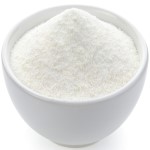
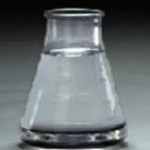
Please visit Safety Data Sheet of Zinc Chloride Anhydrous Battery Grade Powder Solution USP BP Ph Eur EP IP Reagent Grade Manufacturers.
We offer Free-flowing, Anti-caking Zinc Chloride Anhydrous.
Zinc Chloride Pharma Grade or Battery Grade Specifications:
Assay: 95-99 %
Appearance: Snow-white
Ammonia as NH4Cl: 1% max
Alkalies and Alkaline Earth: 1% maximum.
Iron & Lead: 0.005% maximum.
Dry Basis Assay: 99% minimum.
Zinc Oxide: 1% maximum.
Loss on Drying LOD @ 250C: 1% maximum.
Zinc Chloride Solution Lye or Brine Specifications:
Assay: 40-42% (It is also offered as 70% Zinc Chloride Solution or as desired by the buyer)
Appearance: Water White Liquid
Iron & Lead: Less than 10 ppm
Specific Gravity: 1.40-1.45
We also manufacture and supply Zinc Chloride Solution in THF.
Zinc Chloride USP Grade Specifications:
ZnCl2 --- 136.29
Zinc chloride CAS 7646-85-7
DEFINITION
Zinc Chloride contains NLT 97.0% and NMT 100.5% of zinc chloride (ZnCl2).
IDENTIFICATION
A. Identification Tests—General, Zinc: Meets the requirements
B. Identification Tests—General, Chloride: Meets the requirements.
ASSAY
Procedure
Sample solution: Dissolve 12 g of Zinc Chloride in 500 mL of water in a 1-L volumetric flask. Add 12 g of ammonium chloride and dilute with water to volume.
Analysis: Pipet 25 mL of the Sample solution into a 400-mL beaker. Add 100 mL of water, 10 mL of ammonia–ammonium chloride buffer and 1 mL of 0.5 mg/mL of eriochrome black T solution. Titrate with 0.05 M edetate disodium VS to a deep blue endpoint. Each mL of 0.05 M edetate disodium is equivalent to 6.815 mg of zinc chloride (ZnCl2).
Acceptance criteria: 97.0% to 100.5%
Chloride and Sulfate:
Sample solution: 1.0 g in 30 mL of water.
Acceptance criteria: 20 mL of the Sample solution shows no more sulfate than corresponds to 0.20 mL of 0.020 N sulfuric acid (0.03%).
Lead:
Standard solution: Add 5 mL of water, 2.50 mL of standard lead solution TS, and 15 mL of Potassium cyanide solution (100 mg/mL) to a similar color-comparison tube.
Sample solution: Dissolve 0.50 g in 5 mL of water and transfer the solution to a color-comparison tube. Add 15 mL of Potassium cyanide solution (100 mg/mL), and allow the mixture to become clear.
Analysis: To each tube add 0.1 mL of sodium sulfide TS. Mix the contents of each tube and allow to stand for 5 min.
Acceptance criteria: Viewed downward over a white surface, the Sample solution is not darker than the Standard solution (NMT 0.005%).
Limit of Ammonium Salts:
Sample solution: 100 mg/mL
Analysis: To 5 mL of Sample solution add 1 N sodium hydroxide until the precipitate first formed is redissolved, then warm the solution.
Acceptance criteria: No odor of ammonia is perceptible.
Limit of Oxychloride:
Sample solution: Dissolve 1.0 g in 20 mL of water and add 20 mL of alcohol.
Analysis: To 10 mL of the Sample solution add 0.30 mL of 1.0 N hydrochloric acid.
Acceptance criteria: The solution becomes perfectly clear.
Alkalies and Alkaline Earths:
Sample solution: Dissolve 2.0 g in 150 mL of water contained in a 200-mL volumetric flask. Add sufficient ammonium sulfide TS to precipitate the zinc completely and dilute with water to volume. Pass through a dry filter and reject the first portion of the filtrate.
Analysis: To 100 mL of the Sample solution add 5 drops of sulfuric acid. Evaporate to dryness and ignite.
Acceptance criteria: The weight of the residue is NMT 10 mg (1.0%).
Zinc Chloride BP Ph Eur Grade Specifications
Zinc Chloride BP ZnCl2
DEFINITION
Content: 95.0 per cent to 100.5 per cent.
CHARACTERS
Appearance: White or almost white, crystalline powder or cast in white or almost white sticks, deliquescent.
Solubility: Very soluble in water, freely soluble in ethanol (96 per cent) and in glycerol.
IDENTIFICATION
A. Dissolve 0.5 g in dilute nitric acid R and dilute to 10 ml with the same acid. The solution gives reaction of chlorides.
B. 5 ml of solution S gives the reaction of zinc.
TESTS
Solution S: To 2.0 g add 38 ml of carbon dioxide-free water R prepared from distilled water and add dilute hydrochloric acid drop wise until dissolution is complete. Dilute to 40 ml with carbon dioxide-free water prepared from distilled water.
pH: 4.6 to 5.5.
Dissolve 1.0 g in 9 ml of carbon dioxide-free water, ignoring any slight turbidity.
Oxychloride: Dissolve 1.5 g in 1.5 ml of carbon dioxide-free water R. The solution is not more opalescent than reference suspension. Add 7.5 ml of ethanol (96 per cent). The solution may become cloudy within 10 min. Any cloudiness disappears on the addition of 0.2 ml of dilute hydrochloric acid.
Sulphates: Maximum 200 ppm.
Aluminium, calcium, heavy metals, iron, magnesium: To 8 ml of solution S add 2 ml of concentrated ammonia R and shake. The solution is clear and colourless. Add 1 ml of disodium hydrogen phosphate solution. The solution remains clear for at least 5 min. Add 0.2 ml of sodium sulphide solution. A white precipitate is formed and the supernatant liquid remains colourless.
Ammonium: Maximum 400 ppm.
Zinc Chloride IP Grade (ZnCl2) Specifications:
Description: White or practically white, crystalline powder, odorless, very deliquescent
Assay: 95.0 - 100.5
pH: Between 4.6 to 6.0
Aluminum, Calcium, Heavy Metals, Iron & Magnesium: Passes the Test
Ammonium Salts: Passes the Test
Oxychloride: Passes the Test
Sulphate: Passes the Test.
Zinc Chloride Analytical Reagent Specifications
Zinc Chloride ZnCl2
Formula Weight 136.30
CAS Number 7646-85-7
REQUIREMENTS
Assay: 97.0% ZnCl2 Zinc Chloride
MAXIMUM ALLOWABLE
Oxychloride: Passes test
Insoluble matter: 0.005%
Nitrate (NO3): 0.003%
Sulfate (SO4): 0.01%
Ammonium (NH4): 0.005%
Calcium (Ca): 0.06%
Iron (Fe): 0.001%
Lead (Pb): 0.005%
Magnesium (Mg): 0.01%
Potassium (K): 0.02%
Sodium (Na): 0.05%
Zinc Chloride is used for Azotropic or Azeotropic Distillation & Desiccation and as a catalyst.
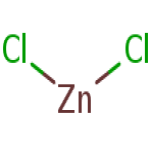
Please visit Hazard Statement of Zinc Chloride Anhydrous Battery Grade Powder Solution USP BP Ph Eur EP IP Reagent Grade Suppliers.
Zinc Sulfate
CAS Number: Anhydrous CAS 7733-02-0, Monohydrate CAS 7446-19-7, Hexahydrate CAS 13986-24-8, Heptahydrate CAS Number 7446-20-0 Monohydrate Hexahydrate Heptahydrate USP BP Ph Eur IP Reagent FCC Food Grade Suppliers Exporters, Manufacturers
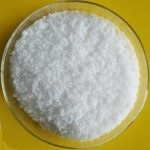
Please visit Safety Data Sheet of Zinc Sulfate Monohydrate Hexahydrate Heptahydrate USP BP Ph Eur IP Reagent FCC Food Grade Manufacturers.
Zinc Sulfate USP Grade Specifications:
ZnSO4-xH2O
Sulfuric acid, zinc& salt (1:1), hydrate;
Zinc sulfate (1:1) monohydrate --- 179.46
Zinc sulfate (1:1) heptahydrate --- 287.56 CAS 7446-20-0
Anhydrous --- 161.44 --- CAS 7733-02-0
DEFINITION
Zinc Sulfate contains one or seven molecules of water of hydration. The monohydrate contains NLT 89.0% and NMT 90.4% of zinc sulfate (ZnSO4), corresponding to NLT 99.0% and NMT 100.5% of zinc sulfate monohydrate (ZnSO4-H2O), and the heptahydrate contains NLT 55.6% and NMT 61.0% of zinc sulfate (ZnSO4), corresponding to NLT 99.0% and NMT 108.7% of zinc sulfate heptahydrate (ZnSO4-7H2O).
IDENTIFICATION
A. Identification Tests—General, Zinc: Meets the requirements
B. Identification Tests—General, Sulfate: Meets the requirements
ASSAY
Procedure
Sample: An amount of Zinc Sulfate equivalent to 170 mg of zinc sulfate (ZnSO4)
Analysis: Dissolve the Sample in 100 mL of water. Add 5 mL of ammonia–ammonium chloride buffer TS and 0.1 mL of eriochrome black and titrate with 0.05 M edetate disodium until the solution is deep blue in color. Each mL of 0.05 M edetate disodium is equivalent to 8.072 mg of zinc sulfate (ZnSO4).
Acceptance criteria:
Monohydrate: 89.0%–90.4% of zinc sulfate (ZnSO4), corresponding to 99.0%–100.5% of zinc sulfate monohydrate (ZnSO4-H2O)
Heptahydrate: 55.6%–61.0% of zinc sulfate (ZnSO4), corresponding to 99.0%–108.7% of zinc sulfate heptahydrate (ZnSO4-7H2O)
Lead: NMT 20 ppm of lead.
Alkalies and Alkaline Earths:
Sample solution: Dissolve the equivalent of 1.12 g of zinc sulfate (ZnSO4) in 150 mL of water contained in a 200-mL volumetric flask. Add sufficient ammonium sulfide to precipitate the zinc completely and dilute with water to volume. Pass through a dry filter and reject the first portion of the filtrate.
Analysis: To 100 mL of the Sample solution filtrate add a few drops of sulfuric acid, evaporate to dryness in a tared dish, and ignite to constant weight.
Acceptance criteria: The weight of the residue is NMT 5 mg (0.9%).
Acidity:
Sample solution: 28 mg/mL of zinc sulfate (ZnSO4)
Acceptance criteria: The Sample solution is not colored pink by methyl orange.
Packaging and Storage: Preserve in tight containers.
Zinc Sulphate Heptahydrate BP Grade Specifications
ZnSO4-7H2O -- 287.5 -- CAS 7446-20-0
DEFINITION
Content: 99.0 per cent to 104.0 per cent Zinc Sulphate Heptahydrate ( Zinc Sulfate Heptahydrate ).
CHARACTERS
Appearance: White or almost white, crystalline powder or colourless, transparent crystals, efflorescent.
Solubility: Very soluble in water, practically insoluble in alcohol.
IDENTIFICATION
A. Solution S (see Tests) gives the reactions of sulphates.
B. Solution S gives the reaction of zinc.
C. It complies with the limits of the assay.
TESTS
Solution S: Dissolve 2.5 g in carbon dioxide-free water and dilute to 50 ml with the same solvent.
Appearance of solution: Solution S is clear and colourless.
pH: 4.4 to 5.6 for solution S.
Chlorides: Maximum 300 ppm.
Iron: Maximum 100 ppm.
Zinc Sulphate Hexahydrate BP Grade Specifications
ZnSO4-6H2O -- 269.5 -- CAS 13986-24-8
DEFINITION
Content: 99.0 per cent to 104.0 per cent Zinc Sulphate Hexahydrate (Zinc Sulfate Hexahydrate).
CHARACTERS
Appearance: White or almost white, crystalline powder or colourless transparent crystals, efflorescent.
Solubility: Very soluble in water, practically insoluble in alcohol.
IDENTIFICATION
A. Solution S (see Tests) gives the reactions of sulphates.
B. Solution S gives the reaction of zinc.
C. It complies with the limits of the assay.
TESTS
Solution S: Dissolve 2.5 g in carbon dioxide-free water and dilute to 50 ml with the same solvent.
Appearance of solution: Solution S is clear and colourless.
pH: 4.4 to 5.6 for solution S.
Chlorides: Maximum 300 ppm.
Iron: Maximum 100 ppm.
Zinc Sulphate Monohydrate BP Grade Specifications
ZnSO4-H2O -- 179.5 -- CAS 7446-19-7
DEFINITION
Content: 99.0 per cent to 101.0 per cent.
CHARACTERS
Appearance: White or almost white, crystalline powder, or colourless, transparent crystals.
Solubility: Very soluble in water, practically insoluble in ethanol (96 per cent).
IDENTIFICATION
A. Solution S (see Tests) gives the reactions of sulphates.
B. Solution S gives the reaction of zinc.
C. It complies with the limits of the assay.
TESTS
Solution S: Dissolve 2.5 g in carbon dioxide-free water R and dilute to 50 ml with the same solvent.
Appearance of solution: Solution S is clear and colourless.
pH: 4.4 to 5.6 for solution S.
Chlorides: Maximum 300 ppm.
Iron: Maximum 100 ppm.
Specifications of Zinc Sulphate IP Grade:
Assay as ZnSO4-7H2O: 99.0 – 104.0 (as ZnSO4-7H2O)
Description Zinc Sulphate: Colourless, transparent crystals or white, crystalline powder.
Solubility: Very soluble in water; practically insoluble in ethanol (95%).
pH of Zinc Sulphate: 4.4 – 5.6
Clarity and Colour of Solution: Clear & colourless solution (10% w/w of Zinc Sulphate ).
Arsenic: 10 ppm maximum.
Iron: 100 ppm maximum.
Chloride: 250 ppm maximum.
Specifications of Zinc Sulfate FCC Food Grade
ZnSO4-H2O Formula weight, monohydrate 179.45
ZnSO4-7H2O Formula weight, heptahydrate 287.54
CAS: monohydrate 7446-19-7
CAS: heptahydrate 7446-20-0
DESCRIPTION
Zinc Sulfate occurs as colorless, transparent prisms or small needles, or as a granular, crystalline powder. It contains one or seven molecules of water of hydration. The monohydrate loses water at temperatures above 238C; the heptahydrate effloresces in dry air at room temperature. Its solutions are acid to litmus. The monohydrate is soluble in water and practically insoluble in alcohol. One gram of the heptahydrate dissolves in about 0.6 mL of water and in about 2.5 mL of glycerin; it is insoluble in alcohol.
Function: Nutrient.
REQUIREMENTS
Identification: A 1:20 aqueous solution gives positive tests for Zinc and for Sulfate.
Assay: Monohydrate: Not less than 98.0% and not more than 100.5% of ZnSO4-H2O; Heptahydrate: Not less than 99.0% and not more than 108.7% of ZnSO4-7H2O.
Acidity: Passes test.
Alkalies and Alkaline Earths: Not more than 0.5%.
Cadmium: Not more than 2 mg/kg.
Lead: Not more than 4 mg/kg.
Mercury: Not more than 5 mg/kg.
Selenium: Not more than 0.003%.
Specifications of Zinc Sulfate Analytical Reagent
Zinc Sulfate Heptahydrate
ZnSO4-7H2O
Formula Weight 287.56
CAS Number 7446-20-0
REQUIREMENTS
Assay: 99 to 103% ZnSO4-7H2O
pH of a 5% solution: 4.4-6.0 at 25C
MAXIMUM ALLOWABLE
Insoluble matter: 0.01%
Chloride (Cl): 5 ppm
Nitrate (NO3): 0.002%
Ammonium (NH4): 0.001%
Calcium (Ca): 0.005%
Iron (Fe): 0.001%
Lead (Pb): 0.003%
Magnesium (Mg): 0.005%
Manganese (Mn): 3 ppm
Potassium (K): 0.01% Sodium (Na): 0.05%
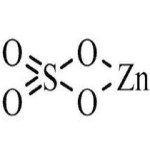
Please visit Hazard Statement of Zinc Sulfate Monohydrate Hexahydrate Heptahydrate USP BP Ph Eur IP Reagent FCC Food Grade Suppliers.
Zinc Carbonate or Basic Zinc Carbonate
CAS Number: 5263-02-5 and 3486-35-9 USP Grade Suppliers Exporters, Manufacturers
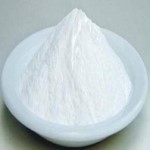
Please visit Safety Data Sheet of Zinc Carbonate or Basic Zinc Carbonate USP Grade Manufacturers.
Zinc Carbonate USP Grade Specifications:
3Zn(OH)2-2ZnCO3 --- 548.96
Basic zinc carbonate;
Zinc subcarbonate CAS 5263-02-5
DEFINITION
Zinc Carbonate contains the equivalent of NLT 70.0% of zinc oxide (ZnO).
This 70% ZnO is equivalent to 56.1% Zinc content. We can also offer Zinc Carbonate of minimum 60% Zinc content.
IDENTIFICATION
A. Identification Tests—General, Zinc.
ASSAY
Procedure
Analysis: Transfer 2.0 g to a 125-mL conical flask, add 50.0 mL of 1 N sulfuric acid and swirl to dissolve. Add 3 drops of methyl orange and titrate with 1 N sodium hydroxide to a yellow endpoint. Each mL of 1 N sulfuric acid is equivalent to 40.69 mg of zinc oxide (ZnO).
Acceptance criteria: NLT 70.0%
Chloride and Sulfate
Chloride:
Sample solution: Dissolve 1.0 g in a mixture of 20 mL of water and 3 mL of nitric acid.
Acceptance criteria: The Sample solution shows no more chloride than corresponds to 0.03 mL of 0.02 N hydrochloric acid (0.002%).
Sulfate:
Sample solution: Dissolve 10.0 g in a mixture of 75 mL of water and 10 mL of hydrochloric acid, and filter. Neutralize the filtrate with ammonium hydroxide and dilute with water to 100 mL.
Analysis: To 10.0 mL of the Sample solution add 1 mL of 0.6 N hydrochloric acid and 1 mL of barium chloride and allow to stand for 10 min.
Acceptance criteria: The Sample solution shows no more turbidity than that produced in a solution containing 0.10 mL of 0.02 N sulfuric acid and the same quantities of reagents used to prepare the Sample solution (0.01%).
Lead: NMT 5 ppm
Insoluble Matter:
Sample solution: Dissolve 10 g in a mixture of 100 mL of water and 7 mL of sulfuric acid.
Analysis: Heat the Sample solution on a steam bath for 1 h. Filter the solution through a tared sintered-glass crucible, wash with hot water, and dry the crucible at 105C. Cool, and weigh.
Acceptance criteria: The residue weighs NMT 2 mg (0.02%).
Substances Not Precipitated by Ammonium Sulfide:
Sample solution: Dissolve 1.0 g in 10 mL of water and 2 mL of sulfuric acid. Dilute with water to 80 mL, add 10 mL of ammonium hydroxide, and pass hydrogen sulfide through the solution for 30 min. Dilute with water to 100 mL, and allow the precipitate to settle. Decant the supernatant through a filter. Use the clear filtrate.
Analysis: Transfer 50 mL of the Sample solution to a tared dish and evaporate to dryness. Ignite, gently at first, and finally at 800±25C. Cool, and weigh.
Acceptance criteria: The weight of the residue is NMT 2 mg (0.4%).
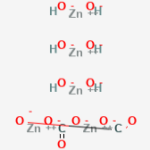
Please visit Hazard Statement of Basic Zinc Carbonate or Zinc Carbonate USP Grade Suppliers.
Zinc Chloride CAS Number 7646-85-7, Zinc Sulfate CAS Number Anhydrous CAS 7733-02-0, Monohydrate CAS 7446-19-7, Hexahydrate CAS 13986-24-8, Heptahydrate CAS Number 7446-20-0 & Basic Zinc Carbonate CAS Number 5263-02-5 and 3486-35-9 Supplier Exporter, Manufacturer:
Annie Chemie P Ltd
Mumbai 4000010, INDIA
With Agents and offices in UAE, USA, Europe.
e-mail: info@anniechemie.com
Copyright and Usual Disclaimer is Applicable.
June 3, 2025
Exporters to USA, Canada, UK, Europe, UAE, Nigeria, Algeria, Turkey, Mexico, Brazil, Chile, Argentina, Australia, Dubai etc.
Perfection is made up of small things and that is a big thing.
